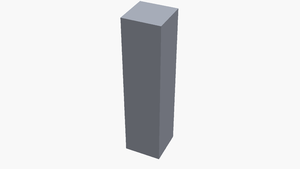Keys: Difference between revisions
From
No edit summary |
No edit summary |
||
| (6 intermediate revisions by the same user not shown) | |||
| Line 1: | Line 1: | ||
{{Parts infobox | {{Parts infobox | ||
|image | |image = Keys.scad.png | ||
| | |designers = [[User:Tim|Timothy Schmidt]] | ||
|date | |date = 2021 | ||
|tools | |vitamins = | ||
|parts | |materials = | ||
|techniques | |transformations = | ||
| | |lifecycles = | ||
|git | |tools = [[Saws]], [[CNC Mills]] | ||
|parts = | |||
|techniques = | |||
|files = | |||
|suppliers = | |||
|git = | |||
}} | }} | ||
| Line 15: | Line 20: | ||
=Introduction= | =Introduction= | ||
In mechanical engineering, a key is a machine element used to connect a rotating machine element to a shaft. The key prevents relative rotation between the two parts and may enable torque transmission. For a key to function, the shaft and rotating machine element must have a keyway and a keyseat, which is a slot and pocket in which the key fits. The whole system is called a keyed joint. | In mechanical engineering, a key is a machine element used to connect a rotating machine element to a [[keyed shafts|shaft]]. The key prevents relative rotation between the two parts and may enable torque transmission. For a key to function, the shaft and rotating machine element must have a keyway and a keyseat, which is a slot and pocket in which the key fits. The whole system is called a keyed joint. A keyed joint may allow relative axial movement between the parts. | ||
Commonly keyed components include gears, pulleys, [[shaft couplers]], and [[washers]]. | Commonly keyed components include gears, pulleys, [[shaft couplers]], and [[washers]]. | ||
Latest revision as of 09:03, 23 September 2021
Introduction
In mechanical engineering, a key is a machine element used to connect a rotating machine element to a shaft. The key prevents relative rotation between the two parts and may enable torque transmission. For a key to function, the shaft and rotating machine element must have a keyway and a keyseat, which is a slot and pocket in which the key fits. The whole system is called a keyed joint. A keyed joint may allow relative axial movement between the parts.
Commonly keyed components include gears, pulleys, shaft couplers, and washers.
